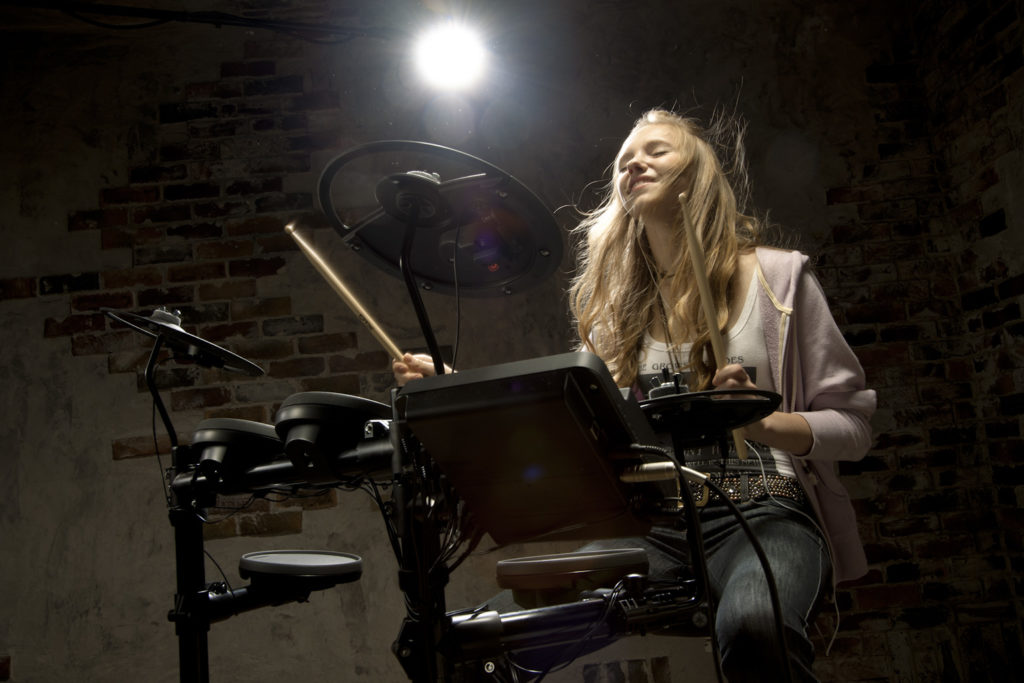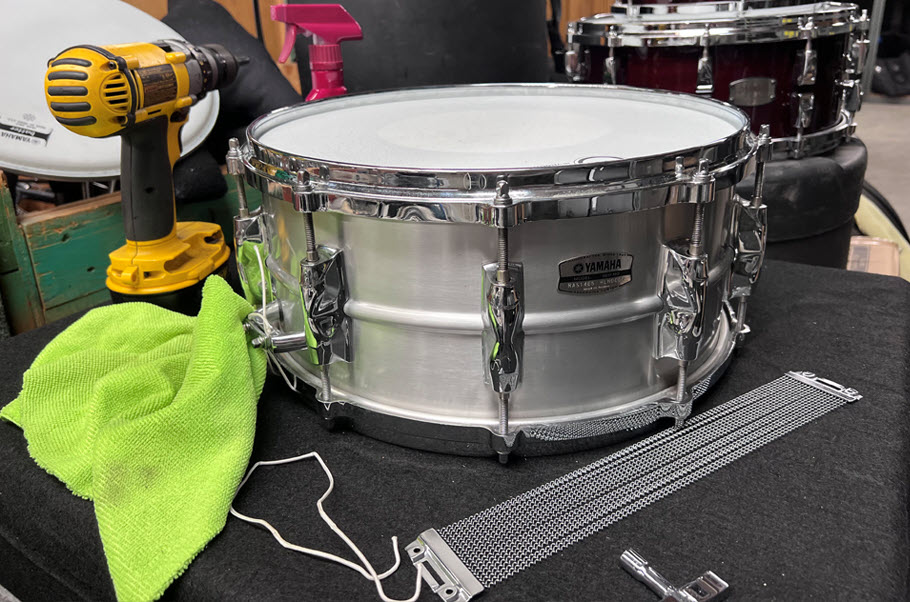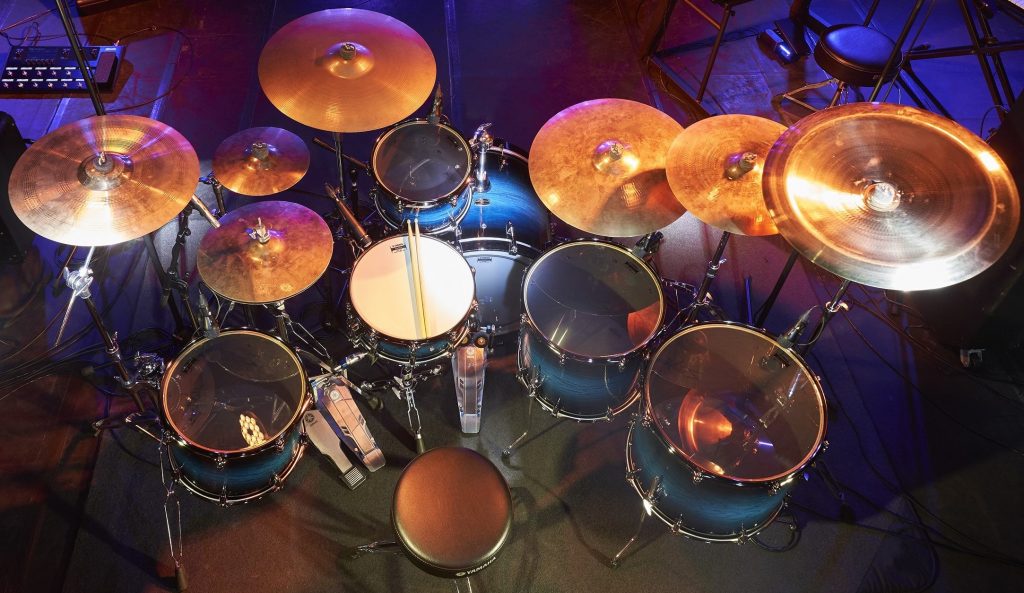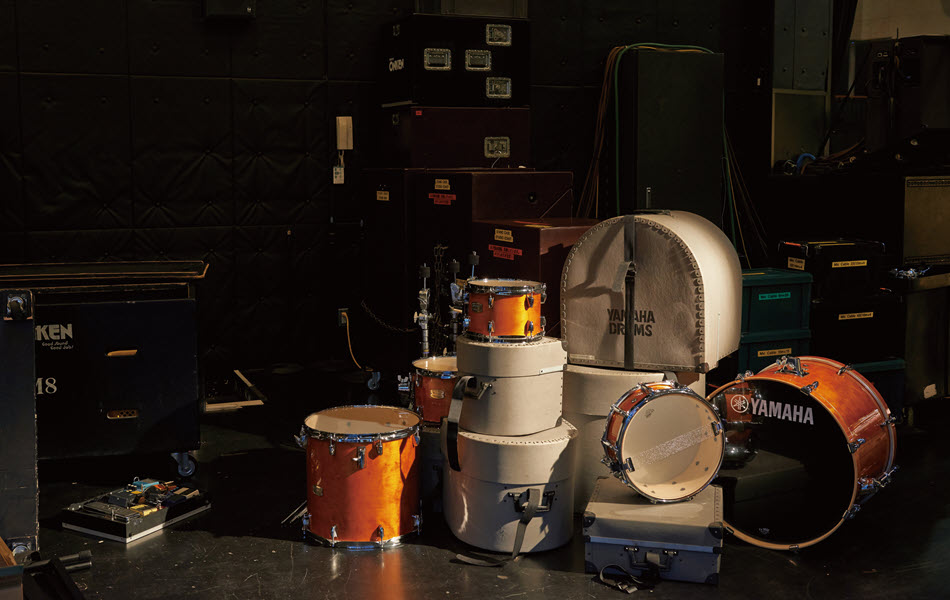Tagged Under:
Choosing the Right Brushes and Multi-Rod Drumsticks
Add a new dimension to your drumming.
In a recent posting here on the Yamaha blog entitled “Choosing the Right Drumsticks,” we told you how to select the ideal pair of drumsticks. Here, we’ll broaden the scope by discussing drum brushes and multi-rod sticks.
Brushes
Looking to increase your range of expression? Try using brushes. Your style of playing and the tonality you achieve will be completely different than when you use sticks. Because they produce a softer sound, brushes are employed most often in jazz. However, they can be effective in any style of music in which you’re trying to achieve a subdued feel, such as ballads, blues or country.
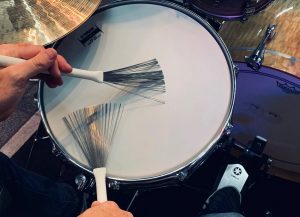
Since there are many different types and varieties available from various manufacturers, the best way to determine which ones to buy is to go to your local music store and try them out. There are as many playing styles as there are drummers, so there really is no one answer to the question, “Which brushes are right for me?”
That said, your decision-making will factor in such things as the materials used, weight and size, and the way the brushes “catch” on the drum head. Let’s take a closer look at each.
Brush Materials
Brushes usually incorporate wire bristles, but some use bristles made of nylon or plastic. Wire works well in small club environments and yields the traditional smooth, swish sound. Nylon and plastic produce a louder sound when striking drums or cymbals, making them more suitable for larger venues, but their sound is noticeably more subdued, duller and warmer. Plastic bristles are also bendier, and so they tend to get “left behind” more when sweeping. However, they readily spring back into shape and so are less likely than wire brushes to be permanently bent. Another benefit to plastic and nylon bristles is that they do not rust like wire does.
In some brushes, the bristles have been given strengthened rubber tips or even metal beads, allowing you to play harder — with a pronounced, snappy sound on both drums and cymbals — when you pull the bristles all the way in, almost like having a pair of multi-rod sticks (see below).
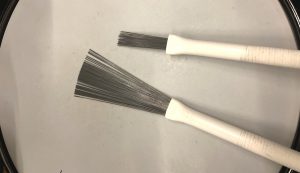
Sometimes, the bristles can be retracted by means of via a pull-rod on the back end of the brush. These kinds of brushes are more versatile since you can precisely set how far out you want the bristles to go, thus altering how closely grouped they are and the spread of the fan, allowing for different playing styles and sounds. For example, a sweeping brush needs long, extended bristles, while shorter, more tightly gathered bristles are preferable when striking drums or cymbals since they allow for harder contact, and thus a sharper attack.
The downside to retractable brushes is that, over time, the moving parts can get jammed and damage the wires, so fixed brushes often last longer. However, since fixed wires can’t be hidden away for storage, you need to be very careful not to bend them — something not easily done in a busy stick bag.
In wire brushes, the quality of the wires has an obvious effect on tonality, as well as how long the brushes will last. Wires come in a variety of gauges, from light to extra heavy. The lighter the gauge, the more mellow the tone, although light-gauge wires tend to get a bit “wobbly” after being used a lot. Heavier gauges tend to stay more consistent over time and produce a louder sound with a more pronounced attack. Which you choose largely depends on the kind of music you’ll be playing.
Weight and Size
Though the handle of the brush doesn’t greatly affect its sound, it does change its feel. Handles are most commonly made of plastic, rubber or wood. Brushes with plastic handles are more lightweight, while the ones with rubber handles offer better grip. Those with wooden handles are great for drummers who want to feel the weight of traditional sticks in their hands. Those with plastic and rubber handles are better for players who want something lighter. It’s always worth checking reviews, since some handles tend to break easily.
There’s no set formula when it comes to the length of handles. Some drummers like having longer handles because of their hand size, while others feel they have better control with shorter handles. Again, it’s best to try out as many different brushes as possible before deciding which ones are right for you.
Catch
The way the bristles of different brushes make contact with (“catch”) on the drum head can vary as well. For that reason, brushes tend to work better on coated heads than clear heads, since there’s a little more friction. (We’ll be talking about drum head choices in a future article here on the blog.)
Over time, the bristle ends of wire brushes tend to bend, and different sounds can be achieved, depending on whether that bend faces upward or downward. For example, if the bend faces upward, a greater surface area of the wire is put in contact with the head, making for a smoother, fuller swish sound and less chance that the tip of the brush will get caught on the drum head. However, if it faces downward, you’ll get a more pronounced sound. Again, the choice is a personal one, and it largely depends upon the genre of music you’re playing.
Multi-Rod Drumsticks
Doing an acoustic gig where regular sticks are too loud but brushes are too soft? Multi-rod drumsticks (sometimes known as “bundled-dowel sticks,” “hot rods” or “rutes”) represent the middle ground in volume, plus they allow you to add a whole new palette of creative textures to your drumming.

Like brushes, they’re available in a wide variety of configurations, sizes and weights. Some use bamboo or birch dowels — literally bundled together within a plastic sheath — while others utilize material made from straw, nylon, fiber or plastic, all available in a variety of widths. Their handles can be made of wood, rubber, vinyl or plastic, and adjustable O-rings in some models allow you to change the spread of the dowels much as you can with a pair of brushes.
These drumstick alternatives deliver a soft, intimate sound for unplugged sets and a fat sound when recording, but perhaps the coolest thing about them is that they are much more responsive than standard sticks, or even brushes. You’ll find that every different multi-rod model produces its own distinct timbre when used to strike drums, cymbals or other percussion instruments, yet all of them provide you with an expanded degree of control over both attack and volume. When subtlety rather than bombast is called for, they can be an especially effective tool … yet your drumming will still be heard loud and clear without ever overpowering delicate instruments like acoustic piano or guitar.
Check out this related posting: Choosing the Right Drumsticks.
This posting is excerpted from the Yamaha Musical Instrument Guide.
For more information about Yamaha drums, click here.










